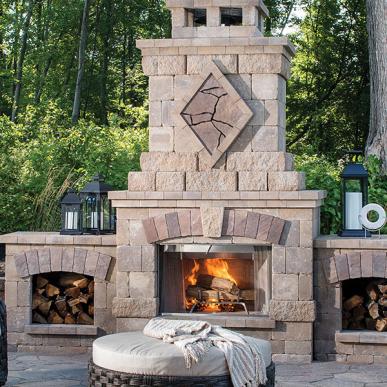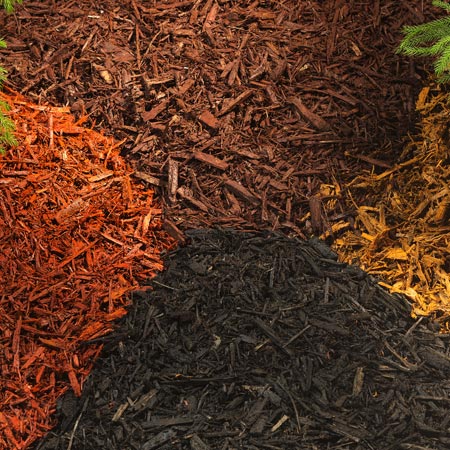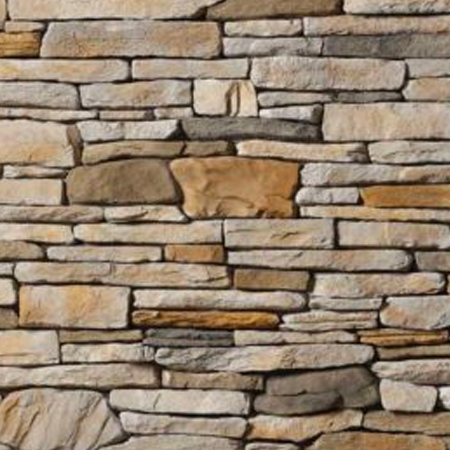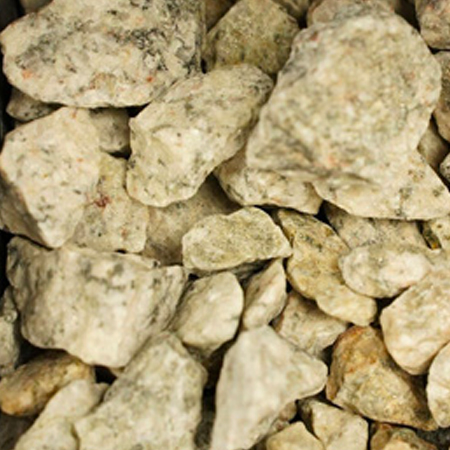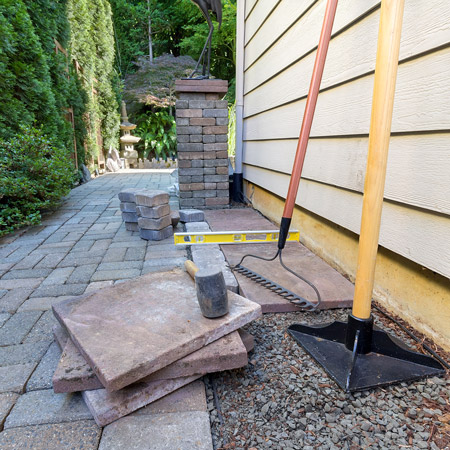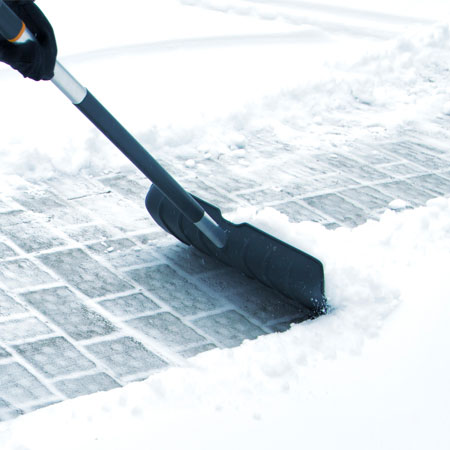
Where to Get Tools & Materials
The best place for South Coast property owners to get the tools and materials they need to complete any landscaping, hardscaping or masonry project is J&J Materials. Here is a basic list of the tools and materials that you will need to create one of the patio stone ideas shared within this article. You may have many of the tools already, but the materials list should be brought to J&J Materials when you purchase your concrete pavers for the job.
The tools you will likely need include:
- shovel, garden rake and work gloves
- carpenter’s level, measuring tape, line level and Mason’s line
- rubber mallet, tamper, sledgehammer and utility knife
The materials you will likely need include:
- concrete pavers or concrete patio blocks
- gravel and sand
- landscaping fabric
- 8 stakes, edging and 2×4 boards
Speak with a customer service agent or sales representative at J&J Materials about additional products and materials that might add to your project. Our team can help you pick out the best-quality materials for your project, at a price that you can afford. Visit our location in Bourne or Seekonk to see our materials first-hand or call to request delivery to your home or other property. We are here to help you get the materials that you need to succeed.
How Much Do You Need?
This can be a difficult question, especially for new DIY homeowners. If you aren’t sure, simply measure the space where you want to put your patio and give the sales rep your measurements. Measure both the length and the width of the area. If you multiply those two numbers – for example a space that is 8 feet by 10 feet, the number you get will be the square footage of your new patio. In the case of the example, that would be 80 square feet. That is an easy way to determine how many materials you will need.
- GRAVEL – To use gravel at a depth of 2 inches, you will need to calculate the volume of the area. To figure this you multiply the length by the width by the height that you want to fill. If you have any questions on how many square feet, cubic feet or cubic yards of materials that you will need, speak with a representative.
- SAND – The same goes for sand. We are talking about the sand layer that is used with the gravel layer to create the base. This helps to level and provide drainage for your new custom patio. Again, volume is configured by lengthy times width times the height that you want to fill, however with sand you will need to figure in for the same pouring down into the gravel. Speak with a representative for help in figuring out how much sand you will need.
- CONCRETE PAVERS – To determine how many concrete patio blocks or pavers you will need in order to finish the project, you would again measure the length by the width of the desired space. So in our example, that would be 8 times 10, resulting in 80 square feet. So you will need 80 square feet of concrete pavers or blocks to get started. Many builders suggest that you purchase an extra 5-10 percent of concrete pavers or blocks to allow for future repairs or breakage during and after the installation.
- EDGING FOR PAVERS – To determine how much edging for concrete pavers that you will need, you need figure out how many linear feet you will need to cover. Just add up the length of all the sides you need to edge. For example, the same 8 foot by 10 foot patio as a stand-alone patio in the middle of your backyard would require 8 feet plus 8 feet plus 10 feet plus ten feet, or 36 linear feet in total. However, that same 8 foot by 10 foot patio built right next to your back door alongside your house would only need three sides of edging, so 8 feet plus 8 feet plus 10 feet, or 26 liner feet in total. Speak with a representative for tips on figuring the amount of materials you will need for circular or oval shaped patios.
Sealing Your Patio for Better Protection
There are a couple of things that you can do to seal and protect your patio. The first is to use a product called polymeric sand to fill in the joints, cracks or spaces in between your concrete patio blocks or concrete pavers. When wet, this product becomes adhesive to itself and to the pavers around it, creating a bonding seal that helps the concrete pavers stay together, providing strength and stability for your patio. Another thing that you can do is to use a paver stone sealer. These products help your patio to stay newer looking longer, protecting it from the elements associated with a typical New England winter.
Patio Stone Ideas and Materials in Bourne, Massachusetts
J&J Materials has a wide selection of concrete pavers, concrete patio blocks and paver stone sealer that you can use to implement your patio stone ideas for your backyard hardscaping project. With two locations, one in Bourne and the other in Seekonk, Southeastern Massachusetts and Rhode Island homeowners and property owners have access to all of the materials, tools, accessories and solutions available at J&J Materials. Stop by one of our showrooms and stone yards to see some of the top quality products that we currently offer.

